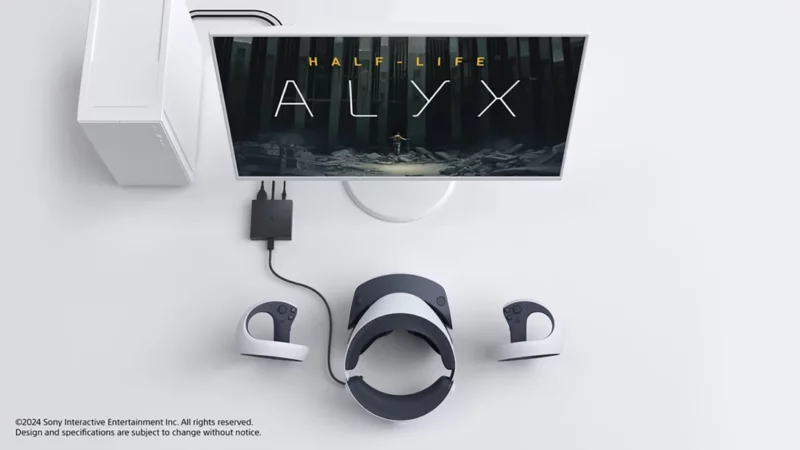
Sony
It doesn’t seem like PlayStation VR2 is having quite the same success as its predecessor, which was a runaway hit at a moment when public curiosity and investment in VR were at an all-time high. Nonetheless, it’s one of the most advanced VR headsets available—tied to a tiny library on the PS5.
That’s about to change, as Sony has confirmed its plans to launch a PC adapter for the headset on August 7. It will cost $60, and it will, at a minimum, let PSVR2 owners play a large library of SteamVR titles, provided their PCs meet the minimum specifications.
Sony’s blog post about the adapter says players will need a Steam account, so it’s unclear how or whether you can use the headset to dive into PC VR experiences through various channels besides Steam.
In addition to the PSVR2 headset, its controllers, and the new adapter, you’ll need a DisplayPort 1.4-compatible cable and the following PC specs:
- Windows 10 or 11 64-bit
- Intel Core i5-7600 / AMD Ryzen 3 3100 or later
- Nvidia GeForce GTX 1650 or later, or Nvidia RTX series, or AMD Radeon RX 5500XT or later, or AMD Radeon RX 6500XT or later
- RTX 3060 or later or RX 6000XT or later are recommended “for the best performance”
- Bluetooth 4.0 or later.
Users will have to install SteamVR, and there will be a PlayStation VR2 app as well.
All that sounds exciting if you bought a PSVR2 but are really feeling the dearth of content on the PlayStation platform. (PSVR2 isn’t compatible with the large library of PSVR1 games, and several flagship VR titles still haven’t been updated for it.)
But a lot of the cool features that make PSVR2 so great won’t actually work on PC, Sony says. That includes “HDR, headset feedback, eye tracking, adaptive triggers, and haptic feedback (other than rumble).”
That’s rather frustrating, because some of those features have shown up in the highest-end PC VR headsets that have been announced.
Sony notes that “the high-fidelity and sensory immersion features of PS VR2 are supported, including 4K visuals (2000×2040 per eye), 110-degree field of view, finger touch detection, and see-through view, as well as foveated rendering (without eye tracking) and 3D Audio in supported games.”
All told, it’s still a relatively strong offering, superior to the numerous Oculus Rift S headsets that are still circulating out there. We’ll have to wait and see what barriers exist to running non-Steam content when it arrives later this summer.
